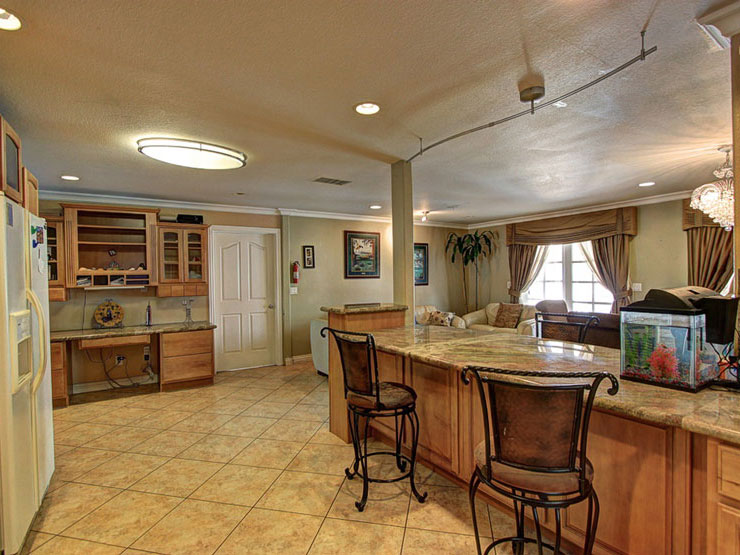
It’s not uncommon for those who complete an inpatient or residential addiction treatment program to feel unprepared for reentry into society. This doesn’t mean the addiction treatment program wasn’t effective. It is more like removing a child’s training wheels from his or her bicycle before he or she feels ready to ride without them. As such, one solution that’s available for individuals who would prefer a slower transition back into the community is to use a sober living facility as a stepping stone between residential treatment and the post-treatment return home.
The final step before full reintegration into society is participating in a Sober Living Environment. A sober living house is a place where recovering addicts can continue to live in a structured, sober environment with supervision to oversee mandatory curfews, chores and therapy sessions. Sober living environments provide much more to the patient then half way houses or transitional living environments. A patient can stay in a Sober Living Environment for up to 12 months. This provides those who are re-acclimating to sobriety with a safe environment in which to begin recovery free from the temptations, triggers, and other contributors that many addicts would be confronting if they continued to live at home during treatment. For those with severe long-term addictions, this is an important component of treatment as it allows each person to focus on recovery while all but eliminating any chance of relapse during the initial treatment period.
When an individual suffers from addiction, he or she will often lose many of the life skills that allow us to sustain ourselves in the real world, or perhaps may never have learned these skills at all. Additionally, many addicts have gone many years without much in terms of responsibility or obligations. This can make the prospect of completing a residential program and returning home intimidating and even frightening to those who don’t feel completely confident in their new-found sobriety. The purpose of sober living facilities is to provide a newly-recovered addict with something of a halfway point between inpatient addiction treatment and being solely responsible for one’s own recovery. As part of sober living, clients are taught to take care of themselves before they’re expected to sustain themselves as a member of society.
This is done by having clients be responsible for chores and self-care, by instating a basic set of rules and curfews, and offering therapeutic meetings in which each client is guided toward readiness to return home. Individuals who need to make housing arrangements, repair familial relations, and find stable, gainful employment can use the sober living phase of treatment for these purposes. The goal of sober living is to make sure clients are confident in their recovery and ready to be responsible, productive, sober members of the community.
By definition, a sober living home—also called a sober living facility or a “halfway house” for recovery—is a transitional living group home in which individuals who have completed and graduated from inpatient addiction treatment can continue living in a monitored sober environment while adapting to an incremental increase in responsibility. The purpose of a sober living home is to be an intermediate point between inpatient care and returning home. A supplement to inpatient or residential treatment during which time individuals learn to be self-sufficient and have a more freedom than is offered during the initial inpatient treatments. When combined with successful attendance to 12 step programs, Sober Living Environments have been shown to improve the long term recovery rate for participating addicts. This phase is considered optional, but highly recommended, because it allows the recovering addict to slowly re-enter society with a newly learned foundation for success. Sober living provides the additional structure and support many individuals need in order to continue on their path of sobriety.
While living in a sober living home or halfway house, individuals are somewhat less supervised than in residential treatment programs, but are expected to abide by the facility’s individual rules. Most sober living homes encourage residents to find employment—especially since individuals will usually pay rent and for other living expenses—and the residents are expected to keep up with chores, which is considered part of the transitional learning experience. While most facilities allow residents to venture into the community, they must do so while abiding by the facility’s curfews and submitting to regular drug screens to ensure compliance with the required abstinence. This last phase of recovery relies on the powerful influence of peer support. Through regularly held alumni gatherings and events, patients can hear personal success stories of former clients who have successfully maintained their sobriety by completing addiction treatment programs. These stories foster strength and hope within other recovering addicts, and no doubt will help them see their positive future, free from addiction.
To be an interim between residential treatment and returning home while still providing a level of treatment and support. Most sober living programs are designed to reinforce each client’s recovery by allowing them to live for up to 12 months in a structured sober environment. Although the sober living phase of treatment is optional, it is highly recommend that clients participate in a sober living program. The environment sober living provides has shown to improve the rate at which people struggling with addiction are able to sustain their recovery. For the duration of each client’s sober living phase and beyond, he or she will have the opportunity to participate in regular alumni events and gatherings.
